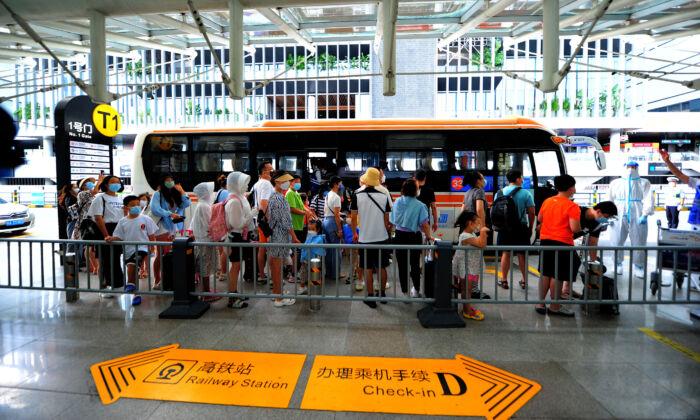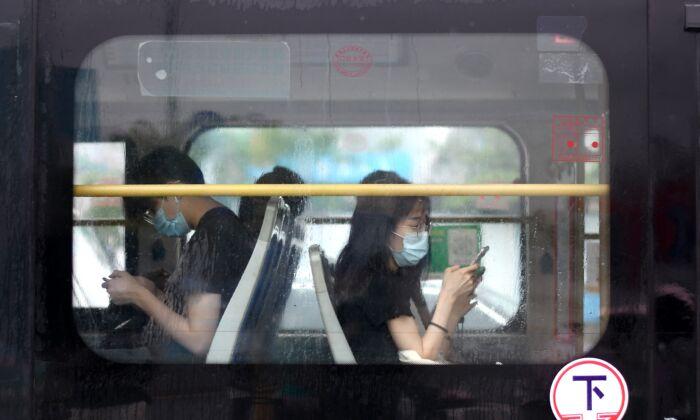The Chinese National Health Commission announced a new high for the current round of CCP virus daily infections on Aug. 10, with 108 local COVID-19 patients among the 143 new cases registered over the previous day.
This is the first time the regime has announced over 100 daily cases in over a year.
The Chinese regime separates diagnosed patients into two groups: one group, called local cases, is people who are infected as a result of transmission in China, and the other group, called imported cases, is people who entered China from another country in the past 2–3 weeks, where transmission of the virus allegedly occurred outside of China.
The 108 local cases were from Jiangsu, Henan, Hubei, and Hunan provinces. On the same day, 38 people were identified as asymptomatic carriers, 20 of which were locally infected, the commission added.
This is the highest count of daily infection that the regime has announced in the current outbreak, which started from Nanjing city in eastern Jiangsu Province on July 20. It quickly spread to many other provinces.
“In China, the true scale of the outbreak is always a mystery. The low-ranking officials don’t dare to report the truth because they will be dismissed if they report a large number of infections. The high-ranking officials also don’t dare to report the accumulated figure if the number is big, because they are required to maintain the society’s stability and a large number of infections will cause a panic,” Tang Jingyuan, U.S.-based China affairs commentator, told The Epoch Times on Aug. 10.
Officials blamed the latest clusters mainly on the highly transmissible Delta variant, ordered residents in the cities that have outbreaks to line up for mass tests, restricted people’s movement; and locked down residential compounds, neighborhoods, and communities one after another.

The commission said 37 of the newly diagnosed patients and two of the asymptomatic carriers were from Henan Province. On Tuesday, the Henan Health Commission announced that 35 of the diagnosed patients were from Zhengzhou city, one was from Zhumadian city, and one was from Kaifeng city. They were all converted from asymptomatic carriers to diagnosed cases on Monday. The newly identified two asymptomatic carriers were from Zhumadian and Zhengzhou.
Despite only having one asymptomatic carrier in Zhengyang county of Zhumadian, the local government announced five high-risk regions and three medium-risk regions on Aug. 10, which would indicate that the real state of infections in the county might be more severe than one asymptomatic carrier. The county had no diagnosed patients by Aug. 10.
On Feb. 25, 2020, the regime ruled that the designation of a high-risk region should only apply when more than 50 residents were diagnosed as COVID-19 patients and a cluster outbreak had been reported in the past 14 days.

The control measures taken by the Zhengyang county authorities include orders that no residents are allowed to leave their homes in high-risk regions, and no residents are allowed to leave their residential buildings or yards in medium-risk regions. At the same time, none of these regions can receive visitors.
In other words, these regions are locked down.
The county government said that the designations were made because a 16-year-old local resident was identified as an asymptomatic carrier on Aug. 9.
Authorities said the young man was studying to be a hairdresser in Wuhan, and came back to his hometown—one of three designated high-risk villages—on Aug. 3, and had visited nearby towns and villages.
However, this explanation doesn’t meet the requirements that the Chinese regime that a high-risk region should have reported more than 50 diagnosed COVID-19 patients.
No Chinese state-run media nor officials questioned the designation of the regions as high risk, nor did they provide an explanation.





